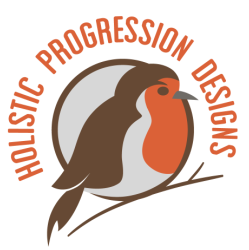
In the Mediterranean climate fire can be a very real threat. There are a range of strategies that vary in complexity that can be implemented depending on the seriousness of the threat, location, time and resources available.
Obviously this is a huge subject, here I'm going to give you just a broad overview!
Fuel, oxygen and heat are the three elements needed for combustion to start and support itself. If you take one of them away, the process stops. Oxygen is very difficult to remove, which leaves fuel and heat. So that’s the place to focus.
Here are some points to consider. The first set address heat and will influence a design the second, fuel, which is related to maintenance.
Heat
1. Realize a sector analysis that helps you identify the direction of possible fires, then you will have relevant information to create a functional design.
2. Create multi-functional firebreaks:
> I once read that a fireman had reported that the only place that didn't burn in a large fire he attended was a irrigated fruit orchard. The same applies to a irrigated vegetable garden. If designed in, both could provide multiple functions: food production and a fire break. This could be largely self-maintaining if designed in combination with a grey water system like the one mentioned in my last post. This is what Permaculture Design is about: integrated largely self-maintaining systems where energy flows from one element to another providing multiple yields. Fire travels fast up hill, burning much slower downhill. So if you have slope, it would be beneficial to positioned irrigated fruit orchard or vegetable garden down hill from the house.
> A vehicle access track can act as a firebreak, it may be concrete, gravel or maintained bare earth. On a smaller scale, a walking path will help in stopping a ground fire spreading. Directly around a house, a stone patio or paved area. Ponds, marshes, rivers and stony areas can also act as firebreaks.
> Another way to create a firebreak is with bands of none combustible summer green or sappy plants, which can provide additional protection.
> A pond / dam or large water tank, situated close to the house (or in the roof space of the house), ideally gravity fed (so that it can be dispersed quickly in a emergency). Often the electric goes out where there is a fire, so a power back up to use to pump the water is something to consider if it is not gravity fed.
Fuel
> Floating embers carried in the wind can be a major problem in the case of big fires, reducing the risk of these developing in to fires on your property can be done through: Keeping gutters clean of leafs and other debris, (gutters can be plugged and filled with water in the event of a fire), removing seat cushions on patio furniture, remove clothes from washing lines and door mats during the months of possible fires.
> Pruning trees that are close to the house, especially lower branches and branches overhanging roofs.
> Keep the storage of fire wood and mulch away from the house. It is better to have these things processed in the times of year where fires are most likely.
> Fit fine mesh screens on house vents to reduce burning embers passing through.
> Appropriate building materials, thinking about walls roofs and decks, earthen houses are one of the lowest fire risks.
> Composting all dry fuel in surrounding forests like Jean Pain, as a fire reduction system.
Forests in Spain
Throughout history many landscapes here in Spain have been drastically affected by exploitation of natural resources and deforestation. Sections of original Mediterranean forest which were dominated by various indigenous species were cut for wood and cleared for agricultural use for either crop production or intensive grazing.
When this reduced due to the depopulation of rural areas, much of this land was abandoned. Large areas were also planted with various varieties of pine and eucalyptus in efforts to reestablish forests. As a result, many Spanish forests have lost their original identity. Both the pine and eucalyptus are known for their flammable resins and these characteristics increase the chances of wildfires.
On a broader scale there also needs to be heightened awareness about how fires are accidentally started to reduce the common things that can cause wild fire: for example, a glass bottle left on the ground, inappropriate disposal of cigarette buts and barbecues that are not properly put out.
Wild fires will always accrue in some areas as part of a natural cycle and through lightning strikes. What is certain is that, through adequate design, we can make areas as safe a possible for humans, animals and houses.
Matt Prosser 27.04.2016


